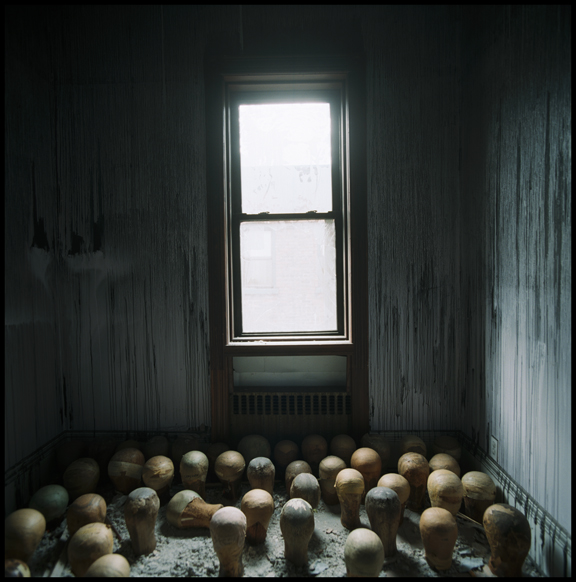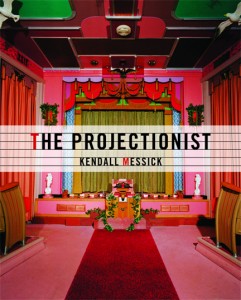

INSTALLATION DATES: NOVEMBER
2010
OPENING RECEPTION: THURS NOV 11/
5:30-8:30PM
ARTIST LECTURE: WED NOV 10 AT 7PM
(OFF SITE AT THE HALSEY INSTITUTE: 161
CALHOUN ST. CHARLESTON, SC
29401)
FOR IMMEDIATE
RELEASE:
IMPERMANENCE:
COLOR PHOTOS BY KENDALL
MESSICK
Impermanence is the result of an almost three
year exploration of the devastation caused by the fire that ravished Kendall
Messick’s home in 2006. In nearly 200 images of the scene he has
oscillated between his typical portrait and documentary practice and a more
aestheticized pictorization to create photographs that are metonymic and act as
a space of meditation and scrutiny. Many of these images are reminiscent
of Aaron Siskind’s metaphoric abstract photographs from the 1960s that
portray dripping paint, graffiti and peeling walls. However, unlike Siskind,
Messick does not wish to impart a transcendent sensibility but instead, he calls
attention to details and privileges a particular type of note taking. One
sees in the development of such images, rendered over a period of one year, the
artist’s attempt to assess the damage. Messick indicates that in the weeks
after the fire, he spent much of his time itemizing his loss for insurance
purposes. His abstract images convey a similar type of enumeration, not only of
specific objects but also of the space that housed these objects. These images
are simultaneously emotive and analytic, their visual impact owed to their
composition. Messick’s use of a square format causes the image to be
pushed out towards the edges of the pictorial field leaving no room for
additional narrative. This, coupled with their diminutive size as compared to
other works in the series, afford them a specimen-like
quality.
As
part of this body of work Messick has also produced surreal images that bring
the viewer closer to the facts of the fire. In drawing us nearer, the more
concentrated looking that is demanded by the abstract pictures gives way to a
visual pulling back, suggesting the palpable weight of Messick’s reaction
to the disaster. The artist’s method of managing the constant
unfolding of ruin is to translate it into a series of vignettes that reveal more
of the destroyed space. In contrast to the abstract pictures, these works recall
film stills and are sharply photographed with acerbic color that calls Mannerist
painting to mind. In them, charred corridors lead to rooms filled with scorched
and mangled objects. In one, an open door reveals disembodied heads bathed in a
ethereal light while in another, dripping streaks stain eerie blue walls. These
elements make them enigmatic as their seemingly constructed nature belies the
actuality of the event. One is caused to wonder how these heads came to be in
this room, in this way? What is Messick trying to articulate as he invites the
viewer to move with him down lonely corridors? The probing, almost forensic
nature of some of his images suggests that Messick is also searching for the
answers to such
queries.
In
Corapeake (1995) and The Projectionist (2007), two
portrait-based projects that seek to record the passing of communities and the
transience of life, Messick embedded himself in the ever-changing lives of his
subjects in order to record the tenor of each passing day. These works contain a
biographical element as Messick has always been drawn to such narratives.
At first glance Impermanence appears to be a departure from such
ruminations, however it is arguably the most intimate of his photo essays and is
the first time he has turned his camera onto himself so extensively. In a series
of pictures of objects entitled Conflagrations he recalls his
portraitist and biographical devices to examine the fire’s aftermath. His
likeness can be found in these objects, as they are beloved possessions that for
the artist resurrect lost craftsmanship. His penchant for reclaiming the past
may account for their fetishist treatment in his images. Portraits of head forms
once used by haberdashers, fishing gigs traditionally forged by blacksmiths and
Steuben glass vases cloaked in the fire’s residue become otherworldly,
seeming to materialize as transient things. It is this space of interstitiality
that reveals the photo-essay’s redemptive meaning. The images
reflect Messick’s sense of wonder in the rediscovery of his objects. His
goal in rendering them is to highlight the distinctiveness of change—to
move from a universal discourse about the destruction to a more personal
celebration of
transformation.
A
conflagration is an all-consuming fire typically started by human intervention.
The heat from such a fire can be so intense that it creates a flow of oxygen,
which allows it to feed on itself. Angel, a workman who while using
solvent to strip varnish from a room’s wooden detailing, inadvertently
struck his steal wool pad against a metal surface starting Messick’s
conflagration. In the exhibition, Angel’s image appears in a set of
black and white prints, some of which were taken just hours after Messick
arrived on the scene. The color reality that describes the conflagration and
predominates Messick’s other pictures is transformed in these images to
indicate a change in the artist’s mood. Messick often uses this tonal
variation to affect an emotional shift. Capitalizing on their warm tones, the
photographer seems to be offering up a requiem by locating the images in a room
that contains the last evidentiary remnants of the fire. Here, the site as
artifact emphasizes the magnitude of the disaster presenting the fire as both
historic and contemporary events.- Text by Andrea Douglas,
Curator of Exhibition, University of Virginia Art Museum/ please credit
MESSICK'S ARTIST STATEMENT AND MORE IMAGES ON THE WEB
AT WWW.REBEKAHJACOBGALLERY.COM/EXHIBITS
REBEKAH JACOB GALLERY/ 169 KING
ST/ CHARLESTON, SC 29401/
843.697.5471

________________________________________________
BOOK RELEASE!

VIDEO ABOUT THE BOOK:
http://vimeo.com/14650423
ABOUT THE BOOK:
The ideal
artist is unwilling to sacrifice his or her individuality to anything or anyone,
particularly commercialism or outside control. Such artists often work in
seclusion and their creations are uniquely pure. Gordon Brinckle is such an
artist. [Messick's] photographs are both tender and authentic in the
greatest sense, and I found myself as close to his subject as I ever could have
hoped to be.” Albert Maysles, documentary filmmaker (Gimme Shelter, Grey
Gardens)Product DescriptionGordon Brinckle (1915-2007) seemed like an ordinary
man a modest and reserved husband and father living in an ordinary 1950s-era
home in Middletown, Delaware. Known around town as the night projectionist at
the local movie theater, it was the unusual way he spent his days that
eventually brought him attention. In his free time, Brinckle meticulously
constructed a miniature version of a grand movie palace in his basement. The
Shalimar, as he called it, was not only fully functional (with nine authentic
movie seats, a projection booth with a 16-mm projector, numerous speakers, and a
working organ) but was also lushly designed and decorated with an obsessive
attention to detail. Brinckle’s “picture palace of renown,” as
he referred to it, adapted various theater styles of the twentieth century,
boasting a marquee that distinctly recalls the 1960s; an auditorium decorated in
the “semi-atmospheric” style of the 1930s, bringing the outdoors in
through the use of fake foliage and wildlife; and three opulent working
curtains. When filmmaker and photographer Kendall Messick, who used to live
across the street from the Brinckle family as a boy, became reacquainted with
his former neighbor during a visit home in 2001, he knew he had to document the
theater and its one-of-a-kind creator. In The Projectionist, Messick captures
every detail of Brinckle’s colorful fantasy world, including
Brinckle’s original artwork, architectural plans, drawings, and linoleum
prints of imaginary movie theaters, ticket stubs, and usher uniform designs. An
essay by curator Brooke Davis Anderson of the American Folk Art Museum looks at
Gordon’s work in the context of outsider art, and a foreword by artist,
curator, and author Mark Sloan discusses Messick’s photographic
work.
Rebekah Jacob
Gallery
169 KING
ST.
CHARLESTON, SC
29401
Read the VerticalResponse marketing
policy.
|

|

